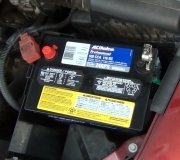You're close. The on-again/off-again nature says this is an intermittent problem. The warning light turns on when the problem is occurring. That is when the tests must be run to confirm this.
When the warning light is not on, the system is working properly, so there is no defect to find or test for. That is when the same tests are performed to evaluate system performance. That is a maintenance test when no problems or defects are expected to be found. It just lets you know how the system is working. One of the tests is real basic and you can do it yourself. That is simply charging system voltage. "Voltage" is electrical pressure, same as water pressure in a municipal water tower. With the engine not running, you're just measuring battery voltage. A good, fully-charged battery will measure 12.6 volts. A good, but fully-discharged battery will be closer to 12.2 volts. Once the engine is running, we want to see the generator raising system voltage to between 13.75 and 14.75 volts. You can see that with an inexpensive digital voltmeter. This article does a better job of explaining this test:
https://www.2carpros.com/articles/how-to-check-a-car-alternator
You might also want to look at this video:
https://youtu.be/Z-p4dMJUpUw
If this voltage test passes, it only means it's okay to continue with the rest of the tests, but that requires a professional load tester. The main test we're looking at is the "full-load output current test". If the voltage test comes back low, this one will be too. The standard generator for your vehicle is a 145-amp unit. No matter what its capacity is, any generator will only develop exactly as much current as the electrical system needs, and no more. This full-load test is the only time it will ever develop that maximum amount. There's only three values we might find. The test will show 0 amps if the charging system is totally dead. That's what we expect to see when the "Battery" light is on. Ideally we want to see very close to 145 amps. There is an internal defect that can occur to all generators that limit its maximum output to exactly one third of its rated capacity. In that case we'd find real close to 50 amps. Another test for "ripple" voltage will confirm this. It is caused by one failed diode of the six. You can still drive the vehicle with this defect, but the charging system may not meet the needs of the entire electrical system under all conditions. At times the battery will have to make up the difference. This defect may or may not turn on the "Battery" warning light, depending on how the circuit is designed.
Friday, May 7th, 2021 AT 5:28 PM

